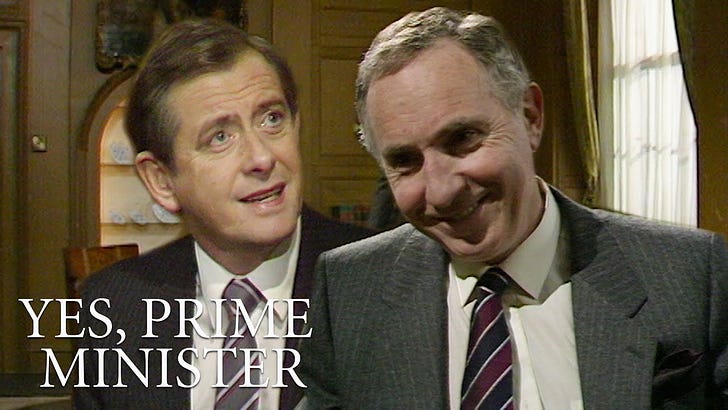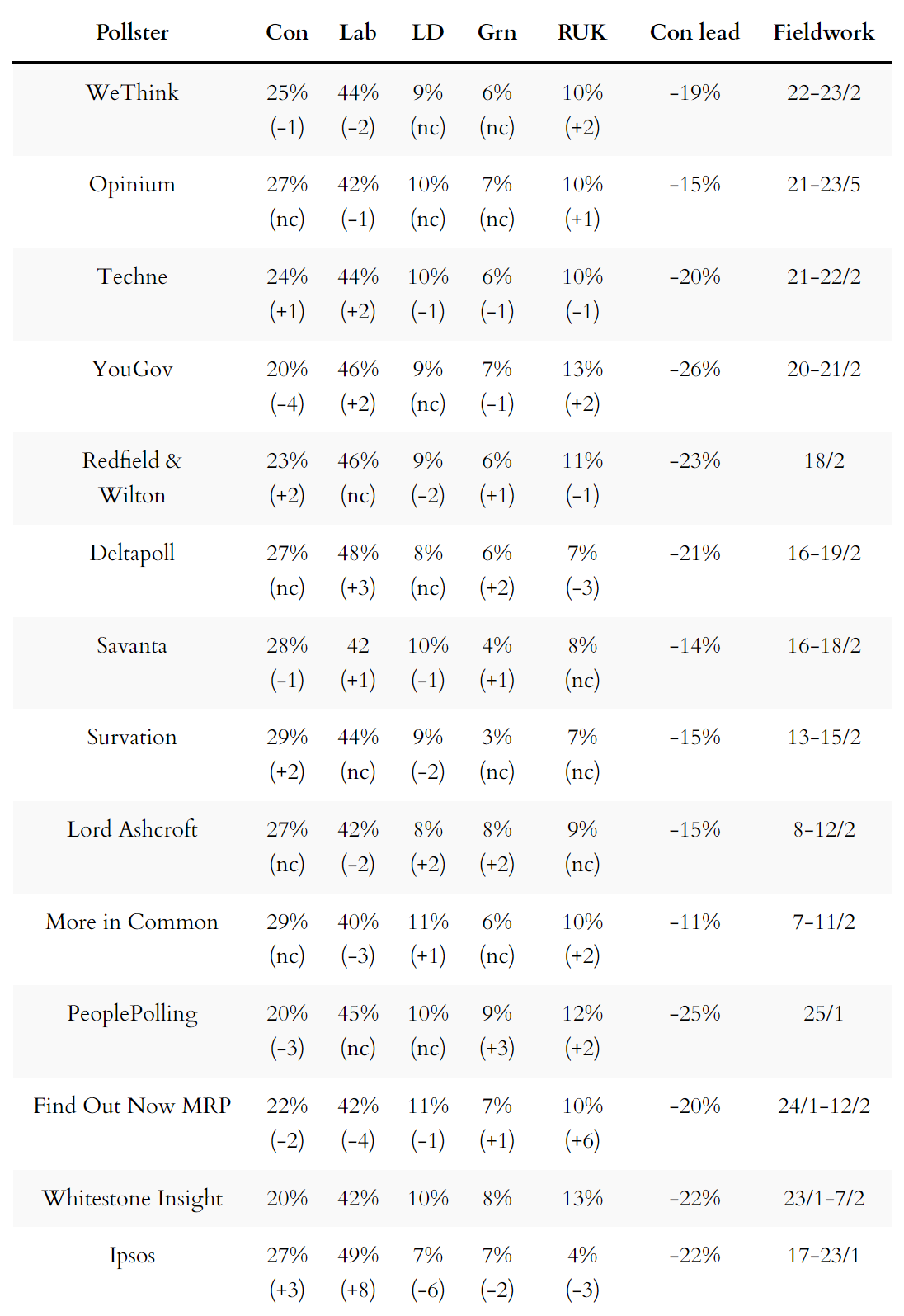Did a famous TV show get it right about opinion polls?
Welcome to the 96th edition of The Week in Polls, which instead of giving you one long story about polling this time gives you three short pieces. Snack away!
Then it’s a look at the latest voting intention polls followed by, for paid-for subscribers, 10 insights from the last week’s polling and analysis. (If you’re a free subscriber, sign up for a free trial here to see what you’re missing.)
But first, this time’s weary sigh is triggered by the Daily Telegraph, yet again, writing up a poll in a less than optimal way. Sunder Katwala does the fact checking in this thread.
As ever, if you have any feedback or questions prompted by what follows, or spotted some other recent polling you’d like to see covered, just hit reply. I personally read every response.
Been forwarded this email by someone else? Sign up to get your own copy here.
Already a reader and know others who might enjoy this newsletter? Refer a friend and you can get up to 6 months of free subscription to the paid-for version.
Want to know more about political polling? Get my book Polling UnPacked: the history, uses and abuses of political opinion polling.
Questionable polling, a questionable slogan and an admirable press release
Was Sir Humphrey right about the polls?
Thirty-eight years ago, the BBC aired probably the most famous TV or film scene about opinion polls.1 It came in the second episode of Yes, Prime Minister in which Jim Hacker, newly installed as Prime Minister and having dealt with nuclear deterrence in the first episode, moved on to worrying about public opinion.
During the episode, senior civil servant Humphrey Appleby explains to his more junior colleague Bernard Woolley how the ordering and wording of polling questions can be varied to get the answer you want:
It’s a scene beloved by pollsters, and often features in training, presentations or discussions about polling.
So kudos to Ipsos for doing something that now seems so obvious: they’ve put all the questions from that fictional sketch into a real poll.
Here’s what they found:
What this shows is that you can get a 21 point switch in views on National Service depending on the lead-up and the wording: from a net 7 point lead in favour of National Service in question A5 to a 14 point lead against it in question B5.
Always checking the poll details, folks.
Ipsos also rightly adds:
Sir Humphrey's central allegation – that polling companies don’t publish all of the questions they include in surveys – is not allowed under British Polling Council rules. Under these rules, polling companies have to be transparent. They must publish all relevant questions asked in a poll in the order they were asked. Interested parties can then reasonably disagree on question wording and so on in an open way.
What does the public think about going back to square one?
The phrase ‘back to square one’ - which mostly likely doesn’t originate with football commentary - has started appearing regularly from the mouths of Conservative politicians. They apparently think that it’s an effective attack on Labour to accuse it of wanting to take things back to square one.
Which is odd, because it’s not obvious that going back to square one is a bad thing. In my experience it’s used to mean something positive, or at least grimly necessary: let’s get out of this hole by stopping digging, taking a breather and then starting all over with the hope of better results.
But what matters much more isn’t what I think, it’s what the public thinks. Pollster Find Out Now has now found out what the public thinks:
In your opinion, would taking Britain "back to square one" be a good or a bad thing?
Good thing 30%
Bad thing 15%
Don’t know 55%
This doesn’t look promising for that Conservative messaging…
An admirable press release from a pollster
If you want to tease a pollster, wait until they have a new poll out.2 Because that’s when they switch from ‘don’t obsess about one poll! look at the trends across multiple polls!’ to ‘look at my poll! look at my poll! look at my poll!’
The best of them segue with reasonable elegance back and forth between these two views - the one that’s the correct way to view polls and the one that’s the necessary way to justify anyone paying for a poll.
Pollsters also often provide graphs, putting their latest figures into context. Not all do, though, and even those that do are not all sticklers for providing the context graph in the same message (e.g. tweet) as the headline figures - with the result that the figures get divorced from the content.
Keeping figures in context is a constant struggle against temptation, so it’s great to see Savanta starting to regularly use paragraphs such as this one in its latest voting intention press release:
The poll also shows Labour's voting intention lead over the Conservatives standing at 14 points, a a marginal increase on last week's 12 point lead. Our polling so far in 2024 has shown Labour leads of 19, 17, 14, 19, 12 and now 14 points.
More like this, please.
National voting intention polls
Once again, insert here references to Michael Foot, the Duke of Wellington and how long it it since the Conservatives were last on more than 30%.
Here are the latest figures from each currently active pollster:
For more details and updates through the week, see my daily updated table here and for all the historic figures, including Parliamentary by-election polls, see PollBase.
Last week’s edition
Do by-election results predict general election results? (Spoiler: yes.)
My privacy policy and related legal information is available here. Links to purchase books online are usually affiliate links which pay a commission for each sale. Please note that if you are subscribed to other email lists of mine, unsubscribing from this list will not automatically remove you from the other lists. If you wish to be removed from all lists, simply hit reply and let me know.
Cutting council tax more popular than cutting income tax or inheritance tax - and other polling news
The following 10 findings from the most recent polls and analysis are for paying subscribers only, but you can sign up for a free trial to read them straight away.
Keep reading with a 7-day free trial
Subscribe to The Week in Polls to keep reading this post and get 7 days of free access to the full post archives.




